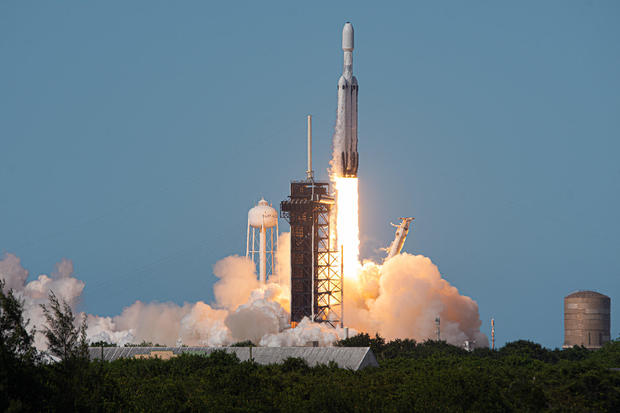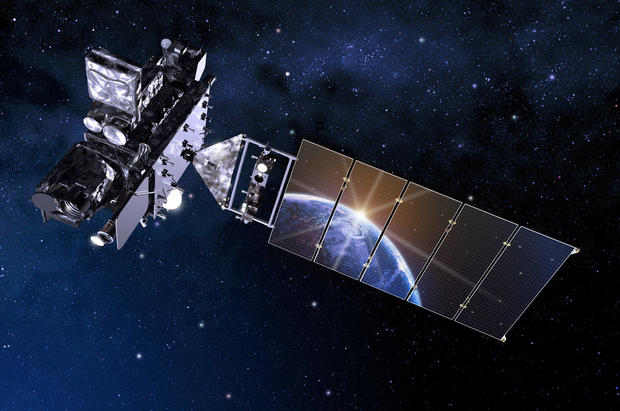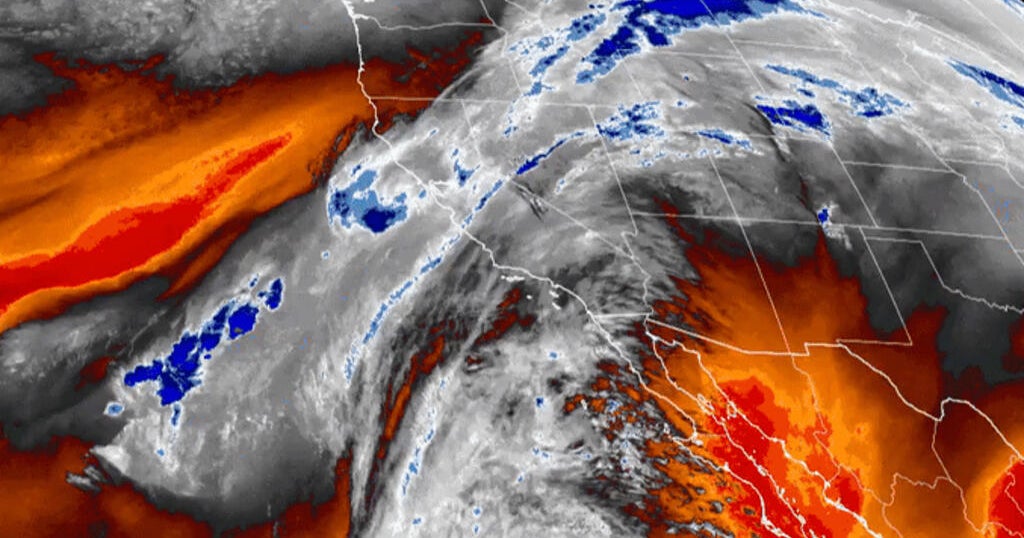SpaceX Falcon Heavy rocket launches powerful hurricane-hunting weather satellite
A powerful SpaceX Falcon Heavy rocket boosted a hurricane-hunting GOES weather satellite into orbit Tuesday, the final member of a four-satellite fleet at the heart of an $11 billion upgrade to the nation's forecasting infrastructure.
"NOAA's geostationary satellites are an indispensable tool for protecting the United States and the one billion people who live and work in the Americas," said Pam Sullivan, GOES program director. "They provide a constant real-time view of weather and dangerous environmental phenomena across the western hemisphere."
Appropriately enough, the primary obstacle to launch of the latest Geostationary Operational Environmental Satellite — GOES-U — was the same sort of weather it was built to observe. Forecasters predicted a 70 percent chance of late afternoon storms that threatened prevent takeoff.
But the expected bad weather took longer to develop than expected, and the Falcon Heavy thundered away from historic pad 39A at the Kennedy Space Center at 5:26 p.m. EDT, propelled by more than 5 million pounds of thrust from the 27 engines at the base of three strapped-together first stage boosters.
After helping push the rocket out of the dense lower atmosphere, the two side boosters fell away and reversed course to fly back to spectacular side-by-side landings at the Cape Canaveral Space Force Station.
A minute-and-a-half after the side boosters separated — four minutes after liftoff — the core stage dropped away, breaking up as planned as it fell to the Atlantic Ocean below.
The single Merlin engine powering the rocket's second stage fired three times over four-and-a-half hours to reach a highly elliptical "transfer" orbit where the GOES satellite was to be released. All three "burns" went off without a hitch, and live video from the rocket showed the satellite's release from the second stage with the blue-and-white orb of Earth in the distant background.
Renamed GOES-19 once in orbit, the Lockheed Martin-built satellite will have to fire on-board thrusters five times over the next 14 days to circularize its orbit at an altitude of 22,300 miles above the equator where the weather station will circle the globe in lockstep with Earth's rotation, taking 24 hours to complete one orbit.
Satellites in such "geosynchronous" orbits appear to hang stationary in the sky, allowing uninterrupted views of the Earth below. Such orbits are used by GOES-type weather satellites, imaging and eavesdropping spy satellites and communications satellites, both military and civilian.
For GOES-19, SpaceX designed a trajectory that reduced the amount of propellant the satellite needed to reach the planned geostationary orbit, leaving enough to increase the satellite's lifetime from 15 to 20 years or more.
After extensive tests and checkout, GOES-19 will be maneuvered to its operational location at 75.2 degrees west longitude where it will have an uninterrupted view stretching from the west coast of Africa to central North America. Another GOES satellite monitors the Pacific Ocean and the western U.S., Canada and central America.
Equipped with six state-of-the-art instruments, including a powerful camera that will provide near real-time high-resolution imagery, the National Oceanic and Atmospheric Administration says its latest satellite will replace an older model to provide continuous observations from the "GOES-East" location through the 2030s.
Dan Lindsey, NOAA's GOES program chief scientist, said once operational, GOES-19 "will be the sentinel in the sky to keep an eye on hurricanes" spawned in the Atlantic that threaten the eastern United States, Caribbean islands, Central America and the Gulf Coast.
The satellite's primary camera, the Advanced Baseline Imager will be able to "scan these these big storms as frequently as every 30 seconds in order to get minute-to-minute warnings out to the public."
When Hurricane Maria hit Puerto Rico in 2017, he said, the island's weather radar was knocked out. "Forecasters actually used the satellite imagery to aid in issuing things like flash flood warnings or severe storm alerts," Lindsey said.
The new satellite also is equipped with a Geostationary Lightning Mapper, which detects lightning flashes in hurricanes and other severe storms. Data from the instrument helps researchers better understand how lightning intensity is related to the growth of such storms.
GOES-19 will serve as the primary satellite for looking at the central United States, Lindsey said, "places like 'Tornado Alley,' or really severe storms throughout the continental U.S. One of the major threats in the Central Plains is something called a supercell. We can see the lightning from the supercells and get that lightning warning out to the public."
Researchers at the University of Wisconsin developed a tool called "LightningCast," a machine learning algorithm "that predicts the probability that lightning will occur within the next 60 minutes," Lindsey said.
"Say there's an outdoor sporting event. Forecasters can look and see the probability that lightning will occur in the next hour," he said. "And if it's a high probability, they may consider warning the public, getting the people who are on the field to safety and getting the fans to safety."
The Advanced Baseline Imager also monitors volcanic eruptions and the vast ash clouds they generate that can pose a threat to aircraft.
"The final application I'll mention is fire detection," Lindsey said. "The near-infrared channels of the ABI are able to detect the hotspots from those fires, we can track the hotspots as they progress out from the fire. And we can get that information out to the emergency managers out to the firefighters in order to keep everyone safe."
GOES-U will monitor space weather as well, imaging the sun's ultraviolet and X-ray emissions, measuring changes in the solar wind and magnetic fields on the lookout for solar flares and other high-energy events.
In addition, a new instrument called the Compact Coronagraph-1 will study the sun's outer atmosphere, or corona, to detect coronal mass ejections, huge explosions that send torrents of electrically charged particles into the solar system. A coronal mass ejection was responsible for the spectacular auroral displays visible across North America on May 10 and 11.
"For the first time, we will have continuous observations of the sun's fainter outer atmosphere, creating the equivalent of a total solar eclipse every 30 minutes," said Elsayed Talaat, NOAA's director of space weather observations.
"In doing so, this powerful solar telescope allows to observe the corona, which is the region where extreme space weather events originate. The chronograph, working in tandem with a magnetometers, solar ultraviolet imagers and extreme ultraviolet and X ray irradiance sensors will strengthen NOAA's ability to predict space weather."
GOES-19 is the final member in a set of four advanced satellites, each one costing roughly $500 million. GOES-R, now GOES-16, was the first satellite in the series, launched in November 2016. NOAA is developing even more powerful satellites that eventually will replace GOES-16, 17, 18 and 19.









